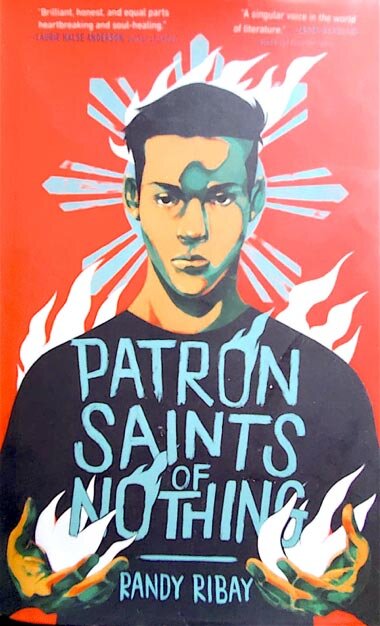Lockdown Reading List: Filipino Fiction (Mostly)
/Elaine Castillo, America Is Not the Heart. With its obvious debts to Bulosan’s novel, this book shuttles between Pangasinan in the Philippines and Milpitas outside of San Francisco, a novel in many voices and languages about immigration, family, love, lust, work, race, sexuality, politics and the beauty of community amid unspeakable secrets and endless food.
https://www.penguinrandomhouse.com/books/549486/america-is-not-the-heart-by-elaine-castillo/
Carlos Bulosan, America Is in the Heart is of course a real classic. I have not read it in 25 years, and the new Penguin edition (with a great cover by Sarah Gonzalez and selected letters edited by Jeffrey Arellano Cabusao) was an invitation to revisit a novel I thought I knew. And there was much I had forgotten and discovered for the first time, drawn especially to the cartography of migrant labor and the sudden bursts of racial and sexual violence in the book. Bulosan comes across as a kind of Pinoy hobo, constantly on the move, hopping from one train to another, escaping the law while seeking to find home amid constant homelessness. The novel seems strongest when it is less polemical and more descriptive about the stark landscapes of betrayal and confusion confronted by Pinoy workers. It also made me think that it would make a great movie as well as a graphic novel if anyone ever wanted to take on this task.
Gina Apostol, Insurrecto. Wickedly funny, erudite and inventive, this novel bristles with ideas about film, literature and war. It’s a brilliant revisionary history of the Filipino American war told from multiple perspectives, genres and languages, much of the latter unapologetically untranslated and untranslatable. Also, with a fantastic cover by Ben Cabrera.
https://www.penguinrandomhouse.com/books/567507/insurrecto-by-gina-apostol/
Mia Alvar, In the Country. Affecting stories about overseas Filipino workers, with sharply delineated details of class differences, status anxieties, gendered aspirations, generational resentments, and surprising love from Bahrain to New York to Manila.
https://www.penguinrandomhouse.com/books/237106/in-the-country-by-mia-alvar/
Randy Ribay, The Patron Saints of Nothing. The fist novel set amid Duterte’s drug wars, this is what is called in the publishing business a “YA” or young adult novel written from the ambivalent and alienated perspective of a 17-year-old Fil-Am boy on the cusp of manhood and college. It begins haltingly in the mid-West, but once in the Philippines, where the narrator seeks to uncover the mysterious death of his cousin in the hands of drug vigilantes, picks up with remarkable energy and a careful attention to details of place and people.
https://www.penguinrandomhouse.com/books/602453/patron-saints-of-nothing-by-randy-ribay/
Ocean Vuong, On Earth We’re Briefly Gorgeous. Not Fil-Am, of course, but this novel/memoir by the Vietnamese American poet is so excruciatingly beautiful, it is difficult to read more than a few pages without having to pause to think and savor its prose. And it provides rich food for thought and spirit for nourishing our understanding about Asia America more broadly. (Vuong’s book is a great compliment to Jia Tolentino’s Trick Mirror, and Cathy Park Hong’s, Minor Feelings).
https://www.penguinrandomhouse.com/books/600633/on-earth-were-briefly-gorgeous-by-ocean-vuong/
Daniel Immerwahr, How to Hide an Empire. Immerwahr seeks to remap the United States as an empire from the very beginning. After the systematic conquest and colonial settlement of Native American lands, the United States looked towards the Pacific and began to annex a chain of islands as early as the 1850s. The invasions and occupations of Hawai’i, Guam and the Philippines were thus not accidental but the nineteenth century culmination of an imperialist trajectory that would set the stage for further expansion through the 20th and 21st centuries.
Edward E. Baptist, The Half Has Never Been Told: Slavery and the Making of American Capitalism. An epic re-telling of the history of American capitalism that shows the foundational importance of racialized slavery not only for the South but for the North as well. With its extensive use of slave narratives, it is part of a growing literature on the history of racial capitalism. Along with Immerwahr’s book, we get a better sense of how the US was built on slavery and empire that provided for the freedom of white settler colonials and elites at the expense of enslaved and colonized others.
https://www.basicbooks.com/titles/edward-e-baptist/the-half-has-never-been-told/9780465097685/
Vicente L. Rafael teaches History at the University of Washington, Seattle.
More articles from Vicente L. Rafael










